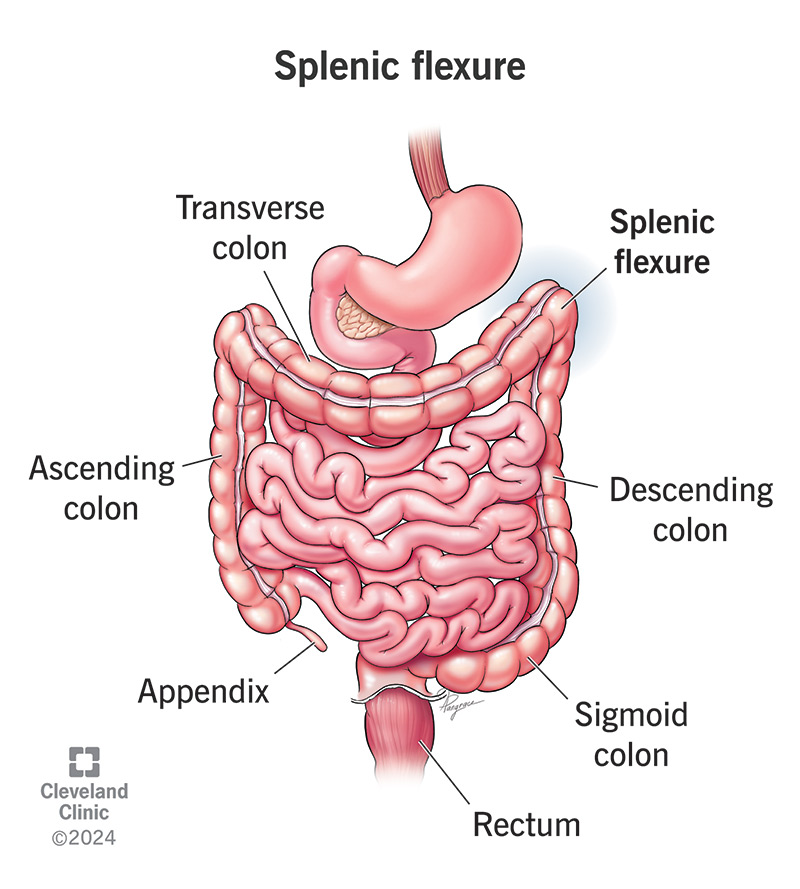The splenic flexure is a part of your digestive system. Specifically, it’s a small bend in the top left of your large intestine. Food waste in your large intestine travels through it on its way to your rectum. The splenic flexure also supplies blood to your colon. Conditions like irritable bowel syndrome or colon cancer can affect it.
Advertisement
Cleveland Clinic is a non-profit academic medical center. Advertising on our site helps support our mission. We do not endorse non-Cleveland Clinic products or services. Policy

Your splenic flexure is a bend in your large intestine (transverse colon) at the top, left side of your belly (abdomen). It’s near your spleen. As it’s on your left side, healthcare providers may sometimes call it your left colic flexure.
Advertisement
Cleveland Clinic is a non-profit academic medical center. Advertising on our site helps support our mission. We do not endorse non-Cleveland Clinic products or services. Policy
A lot is going on in your midsection to support digestion. The easiest way to understand your anatomy is to follow the path that food takes:
Several different conditions can trigger issues with your splenic flexure. Most cause everyday symptoms like constipation or diarrhea. But a condition like colon cancer can block your splenic flexure, which can have life-threatening complications.
Your splenic flexure is part of your digestive system. Food waste in your large intestine travels through your splenic flexure on its way to your rectum.
And your splenic flexure is more than just a bend in the road. It’s important for blood supply to your colon. Blood flows here from your superior mesenteric and inferior mesenteric arteries.
Advertisement
It’s the corner where your transverse colon meets the top of your descending colon. It’s near the tail of your pancreas and spleen. If your large intestine were a winding staircase, your splenic flexure would be the tight corner you’d navigate to get down the stairs.
Your hepatic flexure is the bend on the top, right side of your colon. For this reason, healthcare providers also call it your right colic flexure. It’s at the top of your ascending colon, near your liver.
Conditions that can affect this flexure include:
A healthcare provider may do different tests depending on your symptoms. Some tests may include:
Your treatment will depend on your underlying condition. For example, a healthcare provider may recommend that you eat fewer carbohydrates and cut back on sugar substitutes. If needed, they may recommend surgery to remove a polyp or tumor.
Your splenic flexure is a small part of your large intestine. You may never have a reason to think about it. But digestive symptoms can be hard to ignore. Talk to a healthcare provider if your gut is giving you grief (like bloating, constipation, diarrhea or gas). Losing weight without trying or feeling exhausted are other reasons why you should contact a provider. They may want to do tests to be sure everything is moving through your digestive system as it should. They’ll also likely recommend steps you can take at home to help you feel better.
Advertisement
If you have issues with your digestive system, you need a team of experts you can trust. Our gastroenterology specialists at Cleveland Clinic can help.

Last reviewed on 07/03/2025.
Learn more about the Health Library and our editorial process.